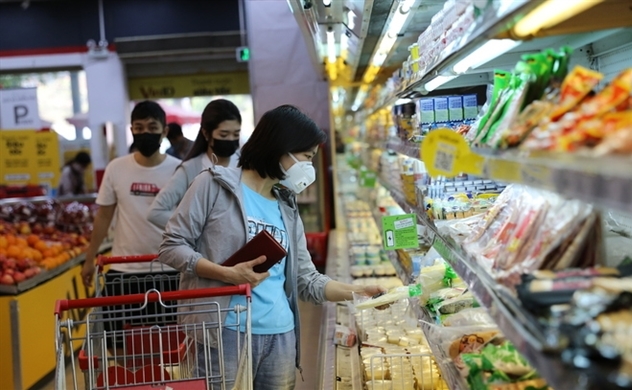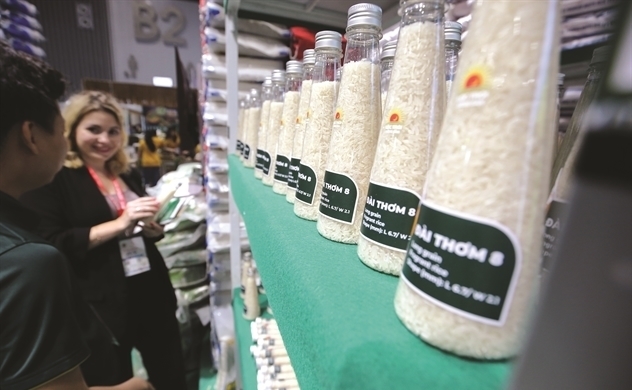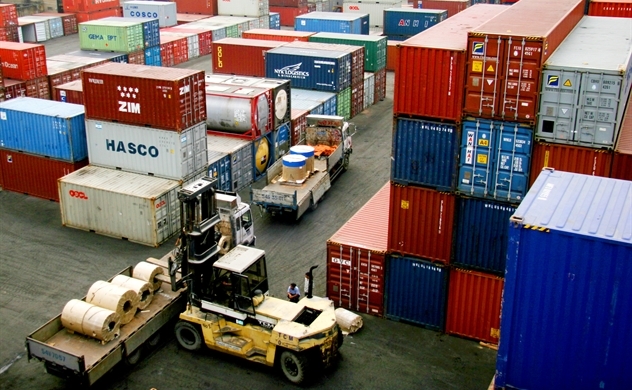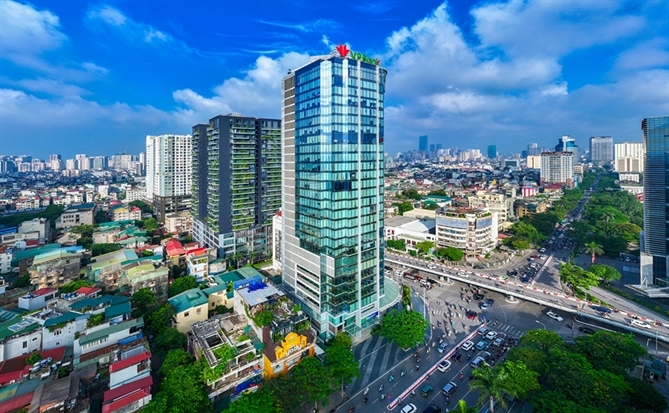Vietnam’s young population, a growth driver for the food and beverage industry

A woman picks food at a supermarket in Hanoi. Photo by VnExpress/Anh Minh.
The Southeast Asian economy is a strong contender for investment when considered alongside other Southeast Asian neighbors, said Mr. David Jackson, CEO of Colliers Vietnam at MakanSingapore, the Food & Beverage franchise fair organized virtually by Simple Group and Colliers Vietnam.
In terms of family units, only 20 years ago there was the townhouse structure where three generations living under one roof. But now, about 53% of the population are under 35 and the average age to start a family is 24.
This means more and more young couples live in apartments; they want convenience and F&B options in the proximity together with entertainment facilities. And the retail sector, including F&B reflects the fundamentals of this social demographics in Vietnam, according to a Colliers report.
Good location and good footfall are some of the key factors for F&B brands to grow their businesses. Therefore, most brands want to be located where the young population spend money on F&B.
This group has better-to-do disposable income while they are more receptive to modern and new food concepts. Many of them have visited Singapore and are already familiar with some of the country’s food or brand.
A lot of big developers look to have good F&B because that is one of the most successful parts of retail in Vietnam. As with the rapid changes in consumers behavior and spending patterns, there is the rise of e-commerce and increasing demand for seamless omnichannel experience post-pandemic.
Vietnam has a very smart and tech-savvy population. Hence, any F&B brand looking to come and grow their business here needs to make sure that they invest in technology; so that when people do enter the stores, they can have the benefits of discounts, loyalty cards, online payment, etc.
For international F&B brands entering Vietnam market, they choose shopping malls, department stores, and similar areas where they’ll be affiliated with other brands and there’s a customer awareness of what’s going on.
Bigger chains have opened their online stores and then they have a secondary unit that do delivery separately. The flagship stores are normally located in Ho Chi Minh city, Hanoi, and Da Nang. But it also worth considering southern cities where there’s high population and maybe less competition like Can Tho and Bien Hoa.
Consumers are increasingly loyal to brands especially those understand the local flavors. They require better services, better structure, and better engagement across touchpoints. In a competitive market here, it is necessary to invest in scale to get loyalty and make sure people understand the product and what you are doing, to shape compelling brand value proposition, having trustworthy brands, and drive innovation across omnichannel platforms. It also needs to be backed up by robust operation and relevant local knowledge.
In summary, Vietnam is evolving. It’s urbanizing, has a growing population, an expanding middle class, and consumer spending is on the rise. And there is great demand for international well-known products and brands. When asked if this is a time to look at Vietnam, when to enter this market, Mr. David Jackson suggested.
The country with a young, dynamic, smart, adaptable, and growing population with an estimation to reach 105 million by 2030 has the growth prospects of the domestic food and beverage industry next year buoyed by new consumption trends, according to experts.
It’s population density ranks third in Southeast Asia, mostly concentrated Ho Chi Minh city and Ha Noi. Urbanization is growing rapidly with roughly 38.7% of the population is now living in cities.
A survey on consumer spending plans under the impact of the COVID-19 pandemic conducted by Deloitte showed that consumers will increase their spending on fresh and packaged foods by 84 percent and 70 percent respectively due to goods hoarding in the pandemic.
Global financial services provider Fitch Solutions reported Vietnam's spending on essential goods, such as food and non-alcoholic beverages, housing and utilities, is estimated to grow between 8 percent and 10 percent year-on-year in 2022 and 2023 respectively, driven by rising spending post-pandemic.

 TIẾNG VIỆT
TIẾNG VIỆT 






_41635620.png)


_14157616.jpg)









